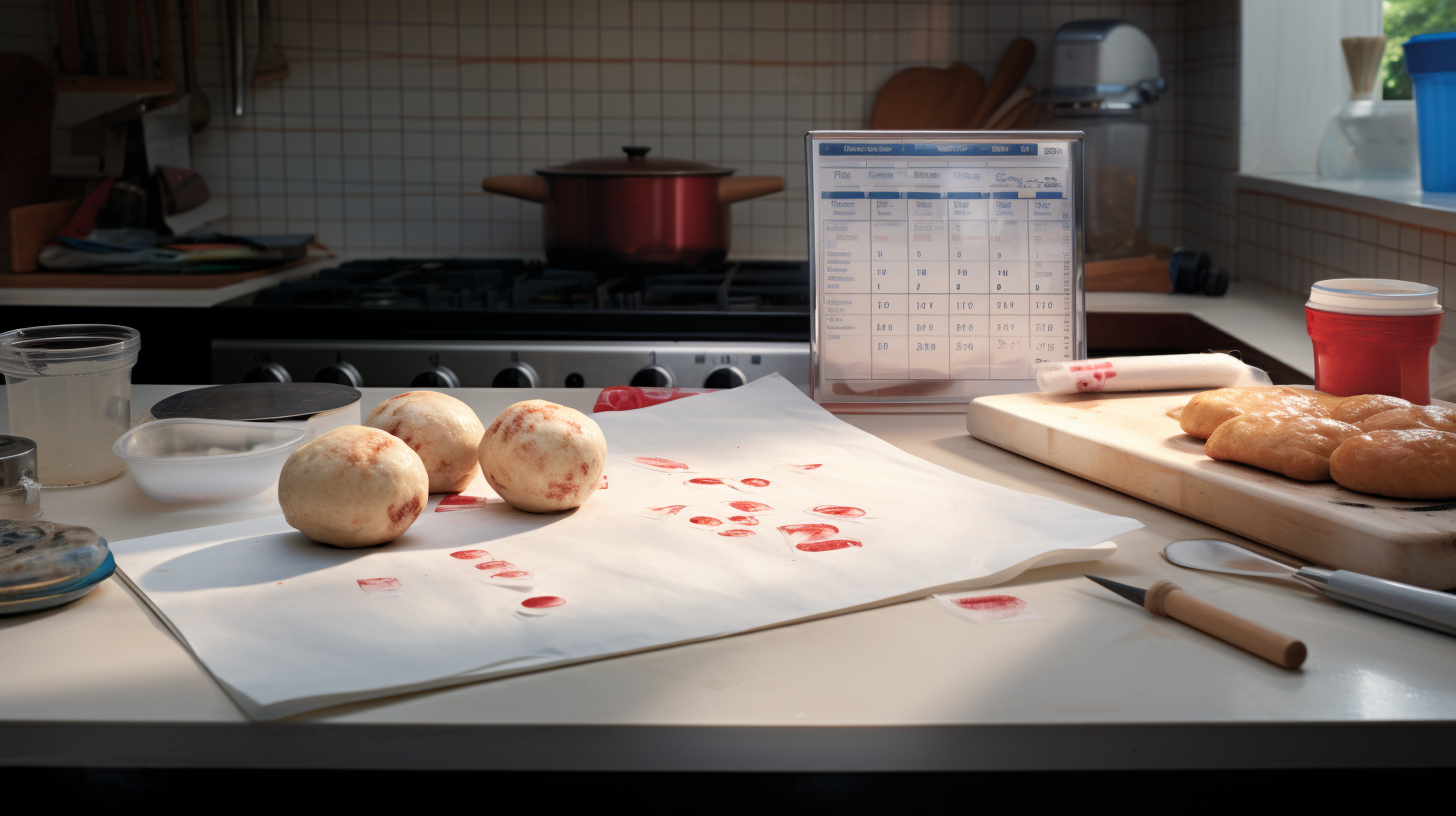Let’s not beat around the bush; you’ve crafted the perfect homemade pizza dough, and now you want to preserve its freshness for future culinary escapades. You’re in luck because freezing your dough is a piece of cake, and with a few expert tips, you’ll ensure it retains its delicious quality.
First, you’ll need to understand the importance of portioning your dough correctly—this will save you from defrosting more than you need when the pizza craving strikes.
It’s crucial to wrap your portions tightly to ward off freezer burn, which can turn your masterpiece into a frostbitten disappointment.
Stay tuned to uncover the secrets to thawing and proofing your dough so that when the time comes, your pizza base is as good as the day you made it.
Key Takeaways
- Portioning and measuring the dough correctly helps with defrosting and ensures even cooking times and uniform thickness.
- Proper wrapping techniques, such as pressing the dough down, lightly oiling the surface, and using plastic wrap or heavy-duty freezer bags, help preserve the dough’s quality and prevent freezer burn.
- Thawing the dough slowly and evenly in the refrigerator, allowing it to rest at room temperature, and giving it time to proof until it doubles in size, all contribute to achieving the best dough consistency.
- Preheating the oven to the ideal temperature, using a pizza stone or steel for a well-cooked bottom crust, and experimenting with different dough hydration levels are key factors for successful pizza baking.
Preparing Your Dough
To prepare your pizza dough for freezing, begin by mixing the flour, yeast, water, and salt until they form a cohesive, elastic ball. Getting the dough hydration right is key; it affects the dough’s texture and its ability to rise. Aim for a hydration level that makes the dough tacky but not overly sticky, as this ensures it’ll freeze well and produce a delicious crust when baked.
Yeast activation is another critical step. Make sure your water is warm but not hot, ideally between 105°F and 115°F, to awaken the yeast without killing it. As you mix, you’ll notice the dough starting to rise slightly—this is a good sign that your yeast is alive and active.
Once you’ve kneaded the dough to the right consistency, it’s time to shape it into balls for individual pizzas. This makes it easier to thaw only what you need later. Remember, the size of your dough balls should match the size of the pizzas you plan to make.
Now your dough is ready to be frozen and enjoyed at your convenience!
Portioning the Dough
Having shaped your pizza dough into cohesive balls, you’ll now want to divide them into portions that align with the size of pizzas you prefer. It’s essential to be consistent with the portion sizes to ensure even cooking times and uniform thickness when you roll out your bases in the future. Here’s where measuring ingredients accurately beforehand pays off, giving you the confidence that each dough ball has the same potential for perfect pizza crust.
Consider these pointers to get your portions just right:
- Weigh Each Ball: For precision, use a kitchen scale to measure the dough. This avoids the guesswork and helps maintain consistency in your pizza sizes.
- Account for Dough Hydration: Higher hydration doughs may be stickier and more challenging to handle, so lightly flour your hands and the surface when portioning.
- Size Matters: Think about your baking equipment. If you’ve got a large oven or a sizeable pizza stone, you might opt for bigger portions.
- Freeze Separately: To avoid the dough balls sticking together, freeze them on a tray first before transferring to airtight bags or containers.
Wrapping for Freezing
Before you tuck your pizza dough into the freezer for long-term storage, it’s crucial to wrap it properly to prevent freezer burn and preserve its quality. Freezer burn can dehydrate your dough and affect its flavor, so choosing the right storage materials is key.
Firstly, press the dough down to expel any air bubbles. Then, lightly oil the surface of each dough ball to keep moisture in. Grab a piece of plastic wrap, large enough to cover the entire ball, and wrap it tightly. This layer acts as a barrier against cold air. For extra protection, consider placing the wrapped dough into a heavy-duty freezer bag or wrapping it again with aluminum foil.
Here’s a quick guide to ensure you’ve got everything you need:
| Material | Purpose |
|---|---|
| Plastic wrap | First barrier, keeps moisture |
| Oil (optional) | Prevents dough from sticking |
| Freezer bag | Secondary barrier |
| Aluminum foil | Additional protection |
Thawing and Proofing
Once you’re ready to transform your frozen pizza dough into a delicious pie, you’ll need to thaw and proof it correctly to ensure the best results. The key is patience; rushing this process can lead to subpar pizza with poor dough consistency.
Here’s what you need to do:
- *Transfer the frozen dough to the refrigerator* the night before you plan to use it, allowing it to thaw slowly and evenly. This minimizes temperature variations that can negatively affect the dough.
- *Let the dough rest at room temperature* for at least 30 minutes before you start shaping it. Room temperature dough is more pliable and easier to work with.
- *Cover the dough loosely with plastic wrap or a clean kitchen towel* to prevent the surface from drying out as it comes to room temperature.
- *Give it time to proof*, which means allowing the dough to rise until it’s airy and has doubled in size. This could take several hours depending on the dough and the room temperature.
Baking Your Frozen Dough
When your dough has fully thawed and proofed, it’s time to preheat your oven to the ideal temperature for baking pizza. The right temperature is crucial for achieving that perfect crust – crispy on the outside, but still chewy inside. Most recipes recommend heating your oven to a high temperature, typically between 450°F to 500°F (232°C to 260°C), depending on your oven’s capabilities and the dough hydration level.
Dough hydration, or the amount of water used in the dough relative to the flour, can affect how your pizza bakes. A higher hydration dough may need a slightly lower temperature to prevent burning, while a dough with less water might tolerate a hotter oven for a quicker bake.
Before you slide your pizza into the oven, let’s talk about oven setup. If you have a pizza stone or steel, place it in the oven during the preheating phase. This will give you a super-hot surface that mimics a pizza oven’s floor, contributing to a well-cooked bottom crust. If you don’t have one, a heavy-duty baking sheet will work; just make sure it’s in the oven as it preheats.
Once your oven is hot and ready, you’re set to bake. Remember, the best pizzas are often the result of a hot oven and a well-proofed, properly hydrated dough.

